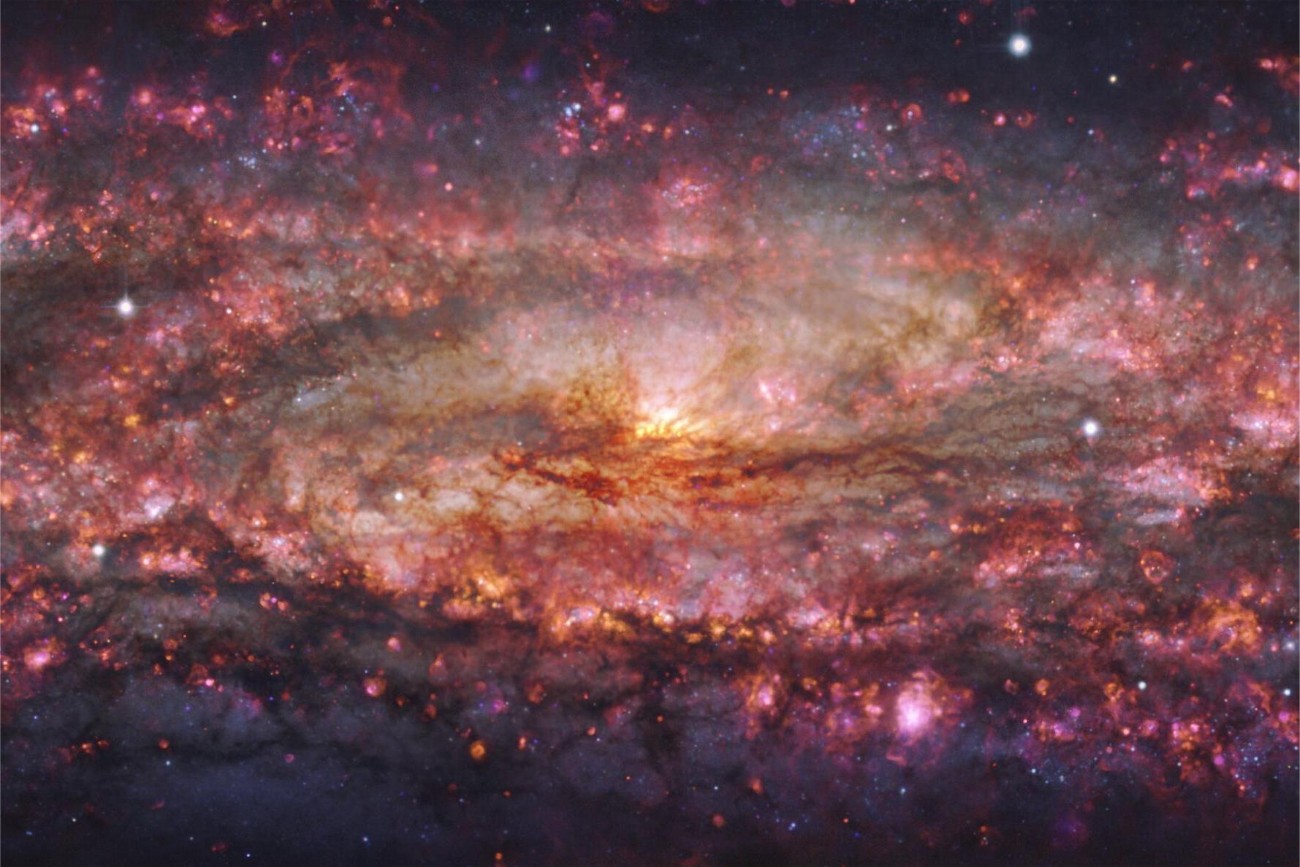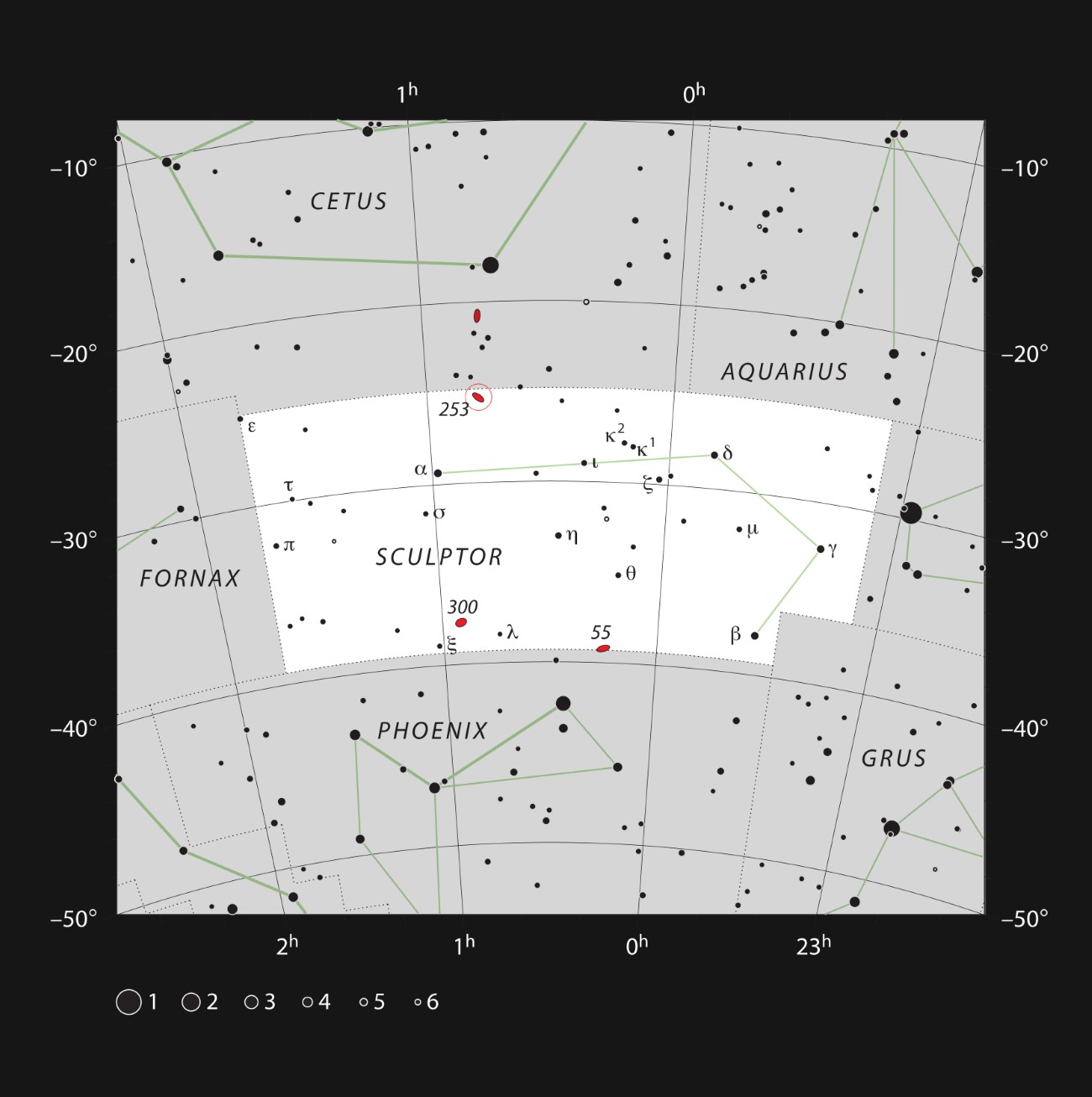

MUSE view of the Sculptor Galaxy, detail. (Photo: ESO/E. Congiu et al.)
Thanks to the European Southern Observatory’s Very Large Telescope, astronomers have created a thousand-color image of a nearby galaxy. The Sculptor Galaxy, also called NGC 253, is located 11 billion light-years away from us and can easily be viewed in the Southern Hemisphere with binoculars. But you’ve never seen it quite like this before.
In a stunning high-definition photograph, astronomers have revealed previously hidden parts of the galaxy. By differentiating the hues of the stars, dust, and gas that comprise this galaxy, they’ve been able to analyze everything from their age to their composition. Meanwhile, they’ve also produced a dazzling image and recently presented their findings in a study that will be published in Astronomy & Astrophysics.
“Galaxies are incredibly complex systems that we are still struggling to understand,” says ESO researcher Enrico Congiu, who led the study on Sculptor. Reaching hundreds of thousands of light-years across, galaxies are extremely large, but their evolution depends on what’s happening at much smaller scales.
“The Sculptor Galaxy is in a sweet spot,” says Congiu. “It is close enough that we can resolve its internal structure and study its building blocks with incredible detail, but at the same time, big enough that we can still see it as a whole system.”
To obtain the image, researchers observed the galaxy for 50 hours with the Multi Unit Spectroscopic Explorer (MUSE) instrument on ESO’s VLT. They then stitched together over 100 exposures to cover an area of the galaxy about 65,000 light-years wide. In addition to the color image, the team also produced a fascinating false-color composition that shows the light released by different gases in the galaxy. These colors represent everything from newborn stars to a black hole at the center of the galaxy.
Now that the map of Sculptor has been created, researchers plan on using it to explore how gas flows, changes its composition, and forms stars all across this galaxy. Congiu says, “How such small processes can have such a big impact on a galaxy whose entire size is thousands of times bigger is still a mystery.”
Astronomers have created a detailed thousand-color image of the Sculptor Galaxy.


This image shows a detailed, thousand-color image of the Sculptor Galaxy captured with the MUSE instrument at ESO’s Very Large Telescope (VLT). Regions of pink light are spread throughout this whole galactic snapshot, which come from ionised hydrogen in star-forming regions. These areas have been overlaid on a map of already formed stars in Sculptor to create the mix of pinks and blues seen here. (Photo: ESO/E. Congiu et al.)


This image shows the Sculptor Galaxy in a new light. This false-color composition shows specific wavelengths of light released by hydrogen, nitrogen, sulphur, and oxygen. These elements exist in gas form all over the galaxy, but the mechanisms causing this gas to glow can vary throughout the galaxy. The pink light represents gas excited by the radiation of newborn stars, while the cone of whiter light at the center is caused by an outflow of gas from the black hole at the galaxy’s core. (Photo: ESO/E. Congiu et al.)
Visible in the Southern Hemisphere, the galaxy, also known as NG253, sits within the Sculptor constellation.


This chart shows the location of the nearby spiral galaxy NGC 253 within the constellation of Sculptor. This galaxy is bright enough to be easily seen as an elongated haze through binoculars from a dark site. (Photo: ESO, IAU and Sky & Telescope)


















